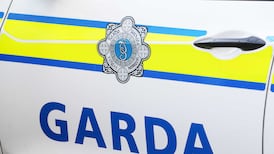A tin can at the centre of assertions as to the development of a fire in which two Bray, Co Wicklow, firefighters died in 2007 was moved several times in the hours immediately after the blaze and also the following day, the inquest into the men's deaths heard yesterday.
The can was moved by individuals examining the cause of the fire, including a Health and Safety Authority inspector Kevin Broderick and an investigator, Michael Slattery, acting on behalf of Wicklow County Council and who was working on the site with senior Wicklow fire service officers who handled the can.
It may also have been disturbed by firefighters dousing embers in the aftermath of the blaze proper.
Brian Murray (46) and Mark O'Shaughnessy (26), died on September 26th, 2007, while fighting a blaze at a disused factory in the north Wicklow town.
The can, an upright five-litre-type metal container that may have held liquid at the time of the blaze and which had on it a label for ‘Granyte’, a lacquer-type flammable liquid, has been the focus of intense examination by lawyers for the families of the dead men.
Mr Slattery, in evidence and in a report written for Wicklow County Council, has suggested the contents of the can were likely responsible for a rapid acceleration of the blaze, incapacitating the firefighters.
Photograph of fire scene
At the last full day's sitting of the inquest on March 6th, Mr Slattery was giving evidence and referring to a photograph of the fire scene, which showed the can and which he said he took on September 27th, the day after the fire.
There was an intervention by Det Garda Maurice Hickey, the lead Garda investigator of the fire which led to the council being convicted in the Circuit Criminal Court, as he produced a photograph, taken on September 26th after the blaze had been extinguished and in which the can was not visible.
The contrast surprised and prompted the coroner, Dr Brian Farrell, to adjourn the inquest, requesting the parties to clarify matters.
When the inquest resumed yesterday, evidence was heard from two Garda forensic scenes of crime investigators, Garda Stephen Heffernan and Garda Sgt Finbar Shea.
Garda Heffernan said that 93 photographs had been taken by him at the scene; 13 of which included the dead men or parts of their equipment and 80 of which were general views of the area of the fire and the exterior.
Some of them showed the tin can on a pile of rubbish close to the spot, but not at it, where Mr Slattery’s later photograph showed it.
It emerged in evidence that several people had picked up the can, examined it and placed it back on the ground but not precisely on the spot from which they had lifted it.
Luán Ó Braonáin, SC, for Wicklow County Council, questioned Garda Heffernan as to why he had not photographed a wider area that would have shown the can on the pile of rubbish, and why more extensive photographing of the fire scene had not occurred.
“There is a whole heap of the ground area of this compartment that has simply not been photographed, maybe half, maybe more than half that has just not been photographed,” Mr Ó Braonáin said.
Adjournment of inquest
He commented on the adjournment of the inquest on March 6th.
“The impression that was given, very clearly, and which became the subject matter of extremely damaging reporting the following day in the newspapers, was an impression that the can was not there on the day of the fire and that in some way, Mr Slattery had contrived to take the photograph of the can that was there the following day,” he said.
Mr Farrell responded: “I don’t agree with that interpretation but however, I think it is clear now that the scene was disturbed.”
“It was, it was,” Mr Ó Braonáin said, “and as far as I am aware, it is accepted by the HSA and the gardaí that the can was there on the 26th.”
Mr Broderick interjected: “All I can say is that it was most probably there but whereabouts accurately, I couldn’t say where.”
When Mr Slattery resumed giving his evidence, the coroner asked whether the location of the tin can altered his view as to its role in the blaze.
“It doesn’t affect significantly my overall belief or judgment on the contribution that can might have made to the incident,” he said.
“I found the can in the general vicinity of where there was this localised, intense burning I call it . . . If the can was a metre or two or three metres away from that, I don’t consider it could have any great significance.”
Forensic photographs
Colm Condon SC, for the O'Shaughnessy family, put it to Mr Slattery that he knew of the existence of the Garda forensic photographs because of references to them in the book of evidence for the criminal trial of the council but he had not asked to see them.
Mr Slattery agreed he had not asked to see the photographs.
The inquest resumes on Tuesday.












